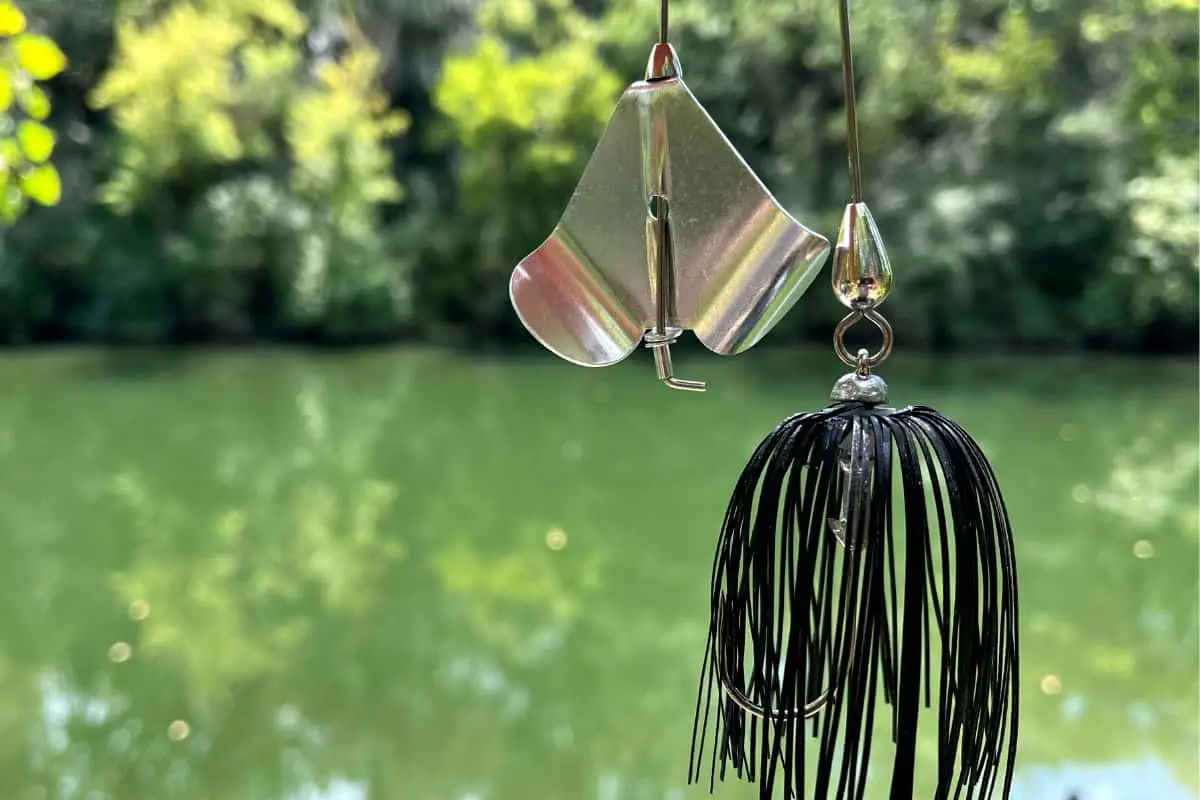The buzzbait has been around for many decades. Anglers have often wondered why and how this crazy-looking lure catches bass. Once we observe it from underwater the answer becomes more obvious.
Buzzbaits create a surface commotion. This sparks the curiosity of predators and often triggers the feeding instinct. Witnessing what the lure looks like from underwater shows us how powerful this bait is.
Buzzbaits come in a huge range of offerings. Savvy topwater anglers know when to adjust the size, color, and blade configuration to get the most out of the conditions.
Understanding what those differences are and how they are seen from the perspective of the bass will help anglers know what to switch and when.
The Buzzbait Blade and What it Looks Like Underwater
New bass anglers often stare at a buzzbait with awe. You know they are thinking that the lure looks nothing like something a bass would find appetizing.
Let’s look underneath the surface.
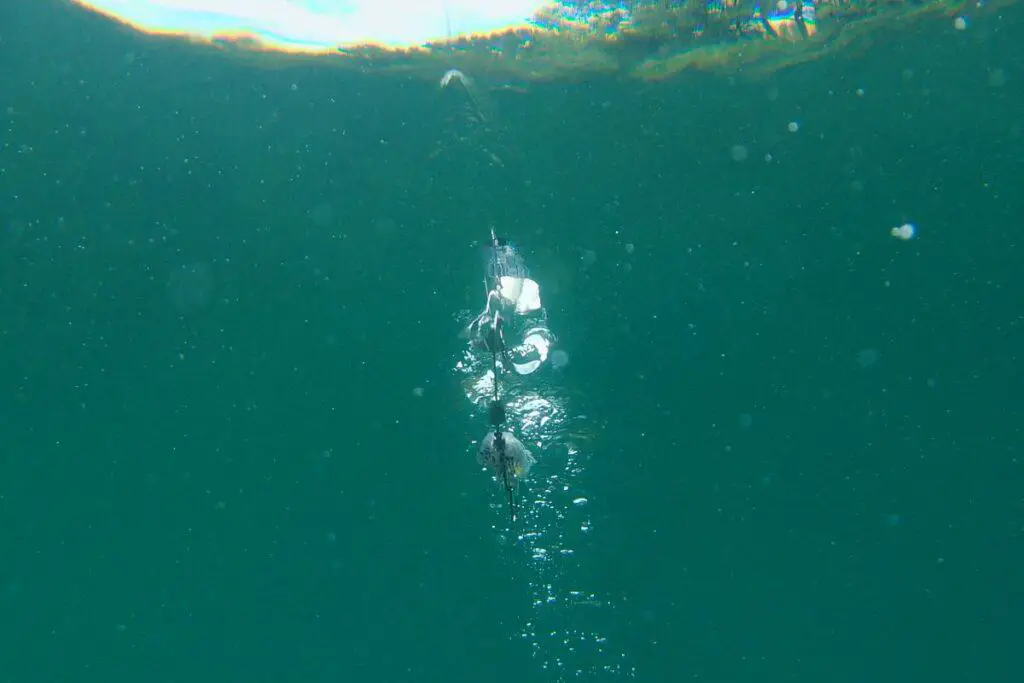
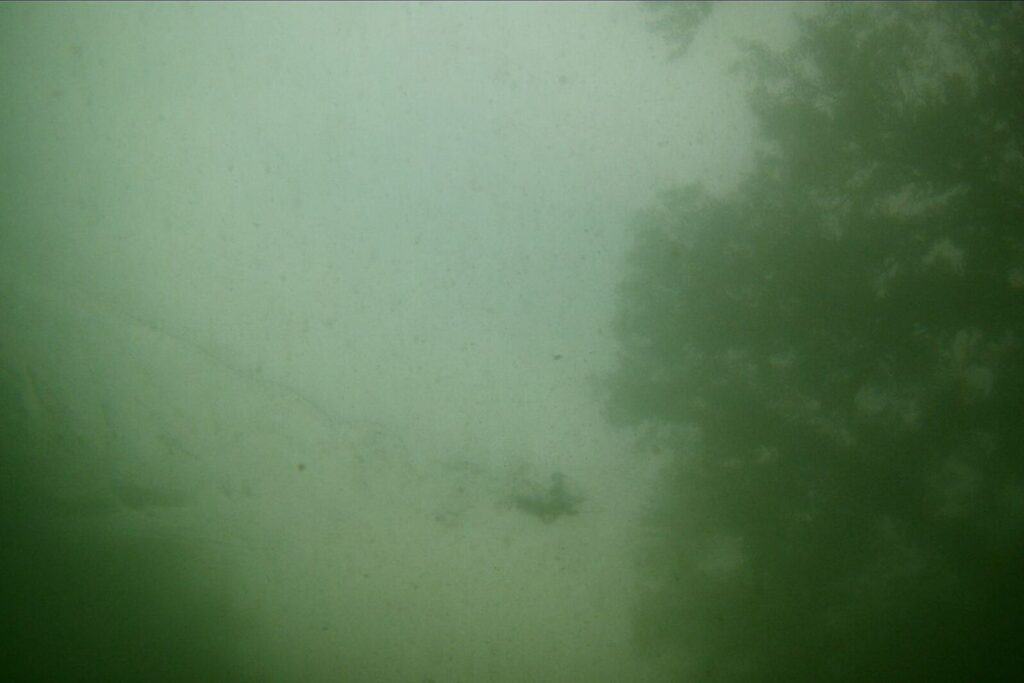
The first thing we notice is that the commotion from below the water is not nearly as pronounced as we see from our point-of-view. I have done many experiments with blade size, soft plastic trailers, and retrieve style.
Even the most violent presentations are a fraction of the commotion from under the water.
The Goal of a Buzzbait (What it is designed to do)
A buzzbait does two things very well – draw fish from a distance and get them to react by initiating the feeding instinct.
Bass are designed to be highly efficient predators. When largemouth or smallmouth sense potential prey escaping or think that prey is being chased by another predator it often forces them into action.
Think about how many times anglers see multiple bass trying to steal a lure out of another’s mouth. This is that powerful instinct taking over. It is very similar to us being near someone else that is eating. It initiates a desire for us to eat as well.
Buzzbaits create this surface commotion that mimics fleeing baitfish.
The Best Buzzbait Retrieve I have Ever Used
We know that the standard “reel it back” retrieve will catch fish. But when we add some small twitches to the lure with our rod, the results are noticeable.
If you have ever watched minnows or baitfish fleeing a predator, you know that the splashes and surface disturbances are anything but steady and consistent.
(Here is an article about selecting the right topwater for the conditions.)
By twitching our buzzbaits on the retrieve we most accurately imitate this natural sequence. The random bursts from the lure throw droplets of water farther away and also create a more natural fleeing baitfish presentation.
When we look at the underwater view of this twitching retrieve we can see the difference that it makes.
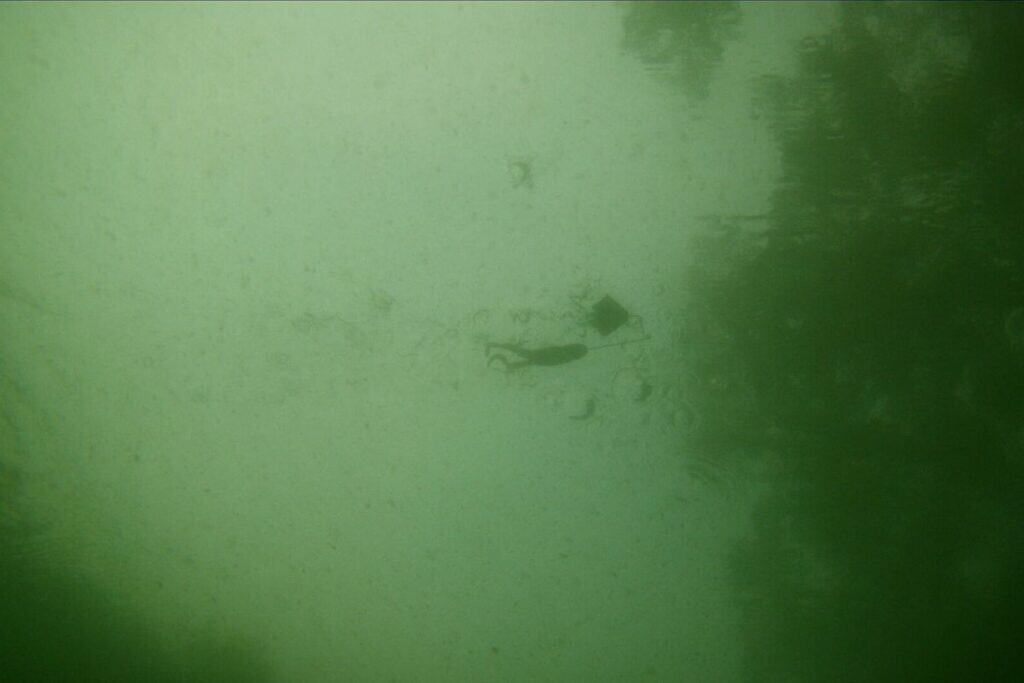
How to Select Buzzbait Size and Color Based on Weather Conditions
When I first started buzzbait fishing I only had one size and color of lure. It was a 1/4oz black two-bladed model.
By filming these lures from underwater, I started to add to my buzzbait collection because I now know what a dramatic difference size and color can make.
For example, I have found that on bright sunny days color is not nearly as defined as we would think. When the bass is tucked under some cover and looks up towards the surface at the buzzbait, the strong backlit lure essentially looks black – no matter what color it really is.
This makes sense. The silhouette is what the predator will see more than fine subtle differences in color. This is especially true from a distance.
Because of what I witnessed, I wanted to present a more solid profile on sunny days which is why I now use black buzzbaits when the sunshine makes for strong silhouettes.
On cloudy days, when a bass may get a better look at the lure, I will use whites and silvers that are more accurate at representing fleeing baitfish.
This is the opposite of what has been taught, but watching lures from under the surface showed me that a strong profile on a sunny day is the most important factor. Yes, our eyes are different than the eyes of our favorite game fish, but I have had success with this approach.
Blade Selection for Buzzbaits
I choose the size of the buzzbait blades based on the amount of wind or current.
On flat calm days, I will often start with a smaller blade. When the surface is broken up by waves and current, I will go with a larger blade configuration.
Once again, observing these lures from underwater taught me that even the biggest blades do not cause as much disturbance from under the water as we may believe.
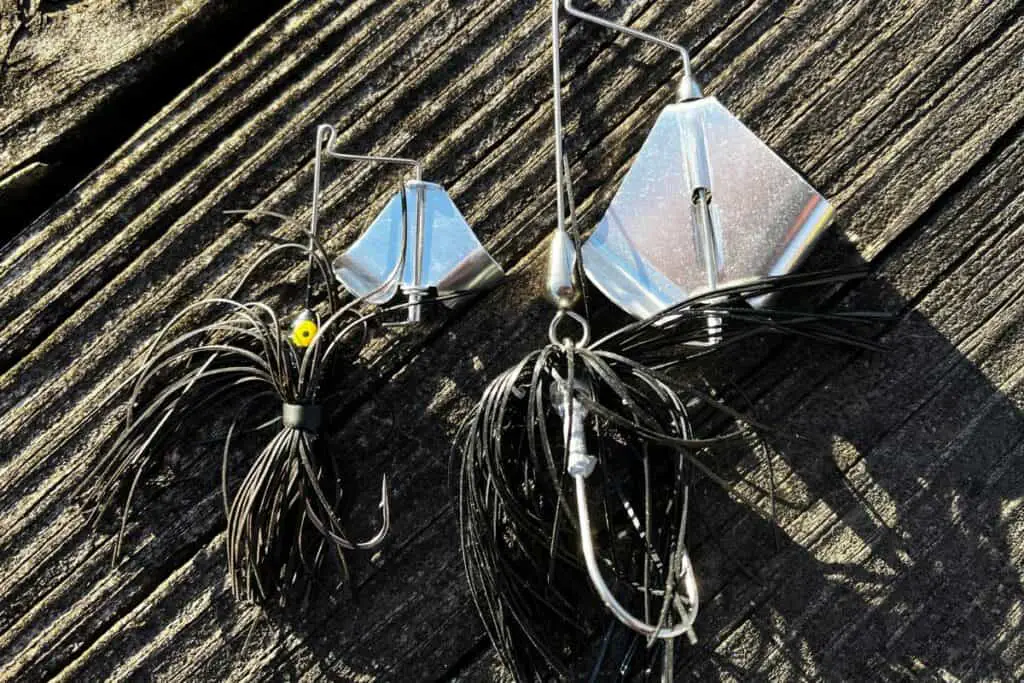
When the fishing is tough and we want to pull out finesse-style lures I often use finesse-style buzzbaits in the 1/8oz size. This is especially effective when you are confident bass are shallow.
I also love to use these smaller buzzbaits when the bluegills are spawning. Twitching a small buzzbait across panfish beds is a great way to find and catch some big bass.
Buzzbait Blade Options
Some buzzbaits have two blades while others have three. There are even blades with holes drilled in them that leave a nice bubble trail.
You can even buy buzzbaits that have two sets of blades in front of the skirt.
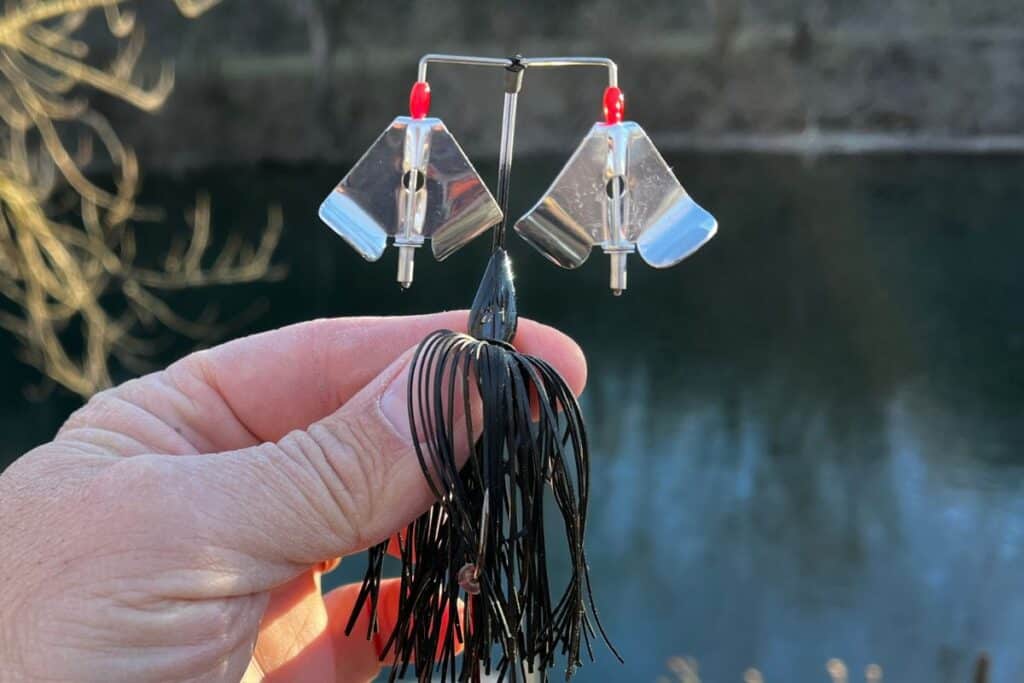
A lot of this comes down to angler preference and what they have confidence in, but once again, I will select these other blade variables based on the water’s surface.
Calm conditions I keep it simple. If there is more surface disturbance, then I will start to add in more blades, holes in the blades, etc.
Soft Plastic Trailers and Buzzbaits
There are essentially three types of bites a bass angler will run across when buzzbait fishing.
These are:
- Slamming
- Slapping or slurping
- Missing
When a bass slams the buzzbait they get it on the first try and the fight is on. This is the bite we all hope for and no soft plastic trailer is needed in this situation.
When a bass slaps or slurps at the buzzbait one of two things could be happening. First, they could be trying to stun the prey before they come back around and eat it. This happens more often than we realize.
In this case, I have found that a soft plastic trailer can help the fish to commit – especially on a twitching retrieve because that trailer adds more life-like action.
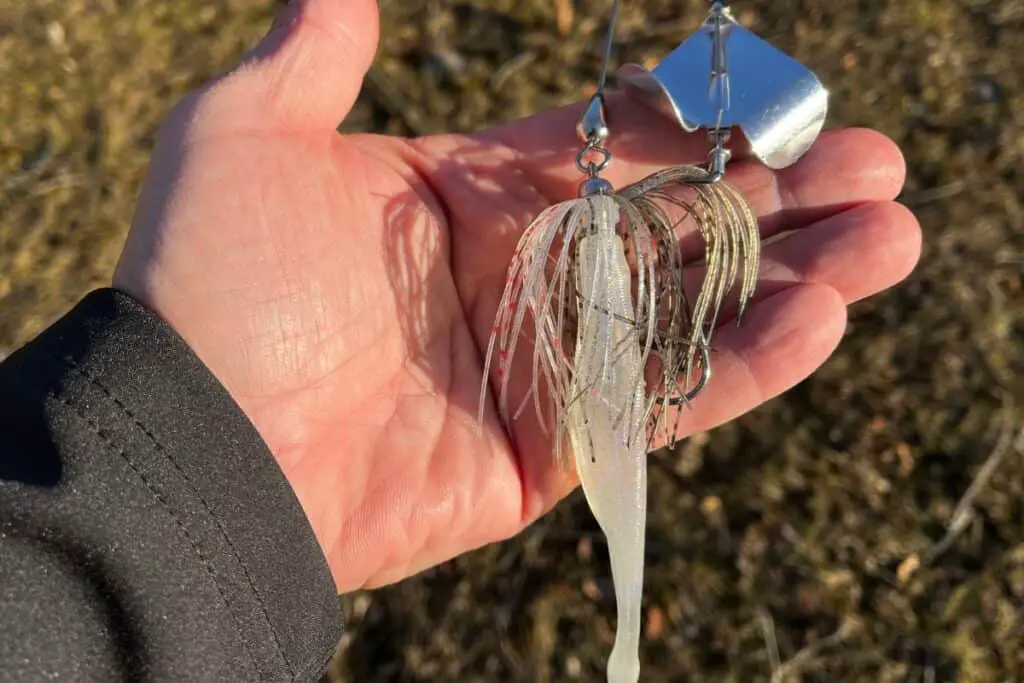
If the bass is just slurping at the buzzbait, they are not as aggressive as we would like. This is often the type of bite where the lure gets heavy and we may not see any surface commotion at all. I run across this most often in very clear water.
Once again, adding a soft plastic trailer can mimic the realism needed when the fish gets closer to the lure.
When a bass “misses” a buzzbait it is often because they are hitting the blades. The same thing can happen with a spinnerbait.
Adding a soft plastic trailer will help draw their attention to the back part of the lure where the hook is.
My favorite buzzbait trailers are straight-tail soft jerkabaits, paddle-tail soft jerkbaits, and split-tail trailers.
Keep Experimenting with Buzzbait Options
Buzzbaits are versatile lures and can be used a lot more than we often give them credit for.
Another added bonus is the hook curls upward.
This is a huge benefit over other topwaters that sport trebles hanging below the lure. If there is surface clutter like leaves, pine needles, small sticks, etc., treble hook topwaters are inefficient.
A buzzbait will come right over that stuff and be working for you more of the time.
Good luck out there and be sure to encourage someone today. You never know how you might change their life forever.
Isaiah 6:8

